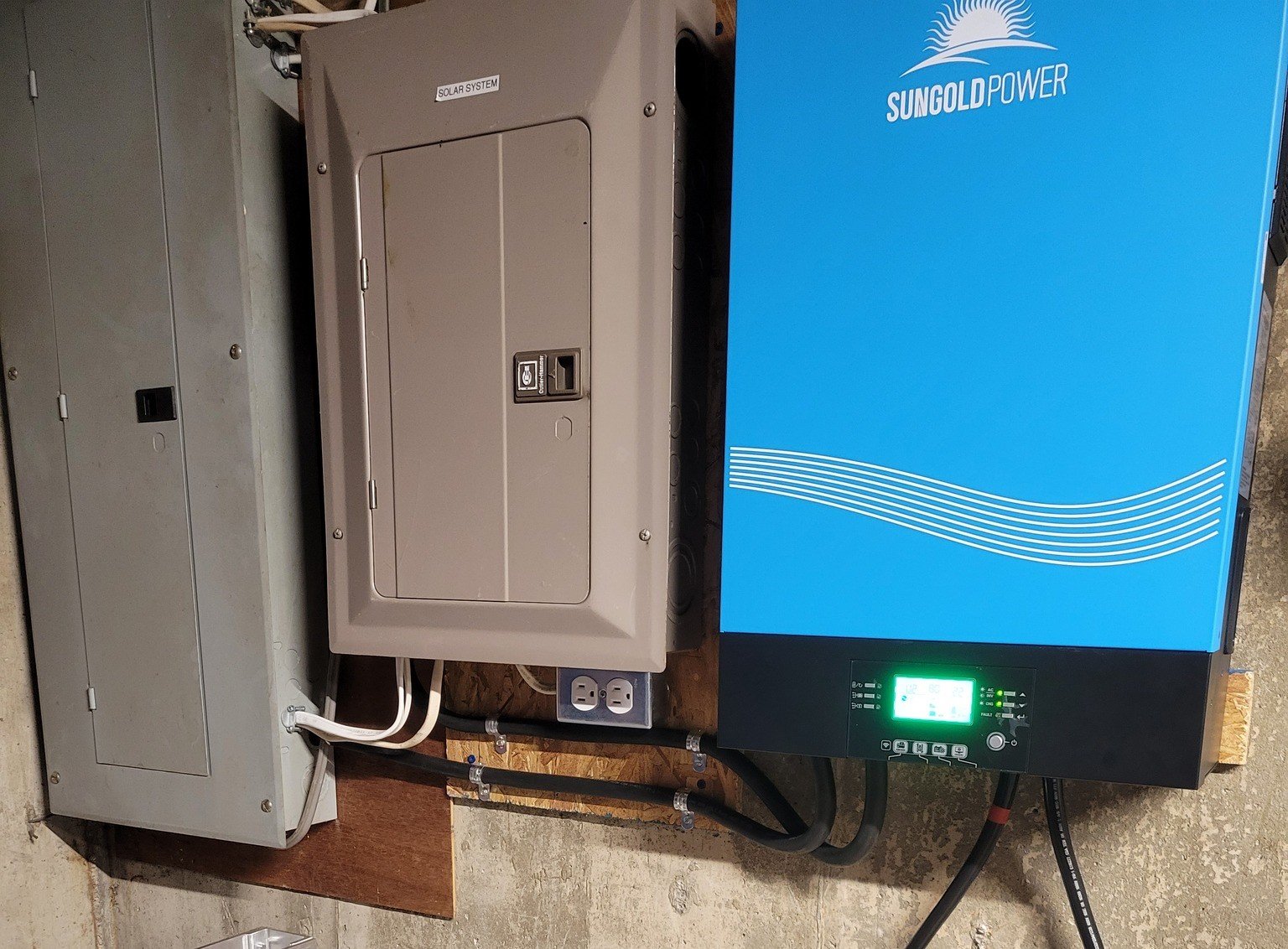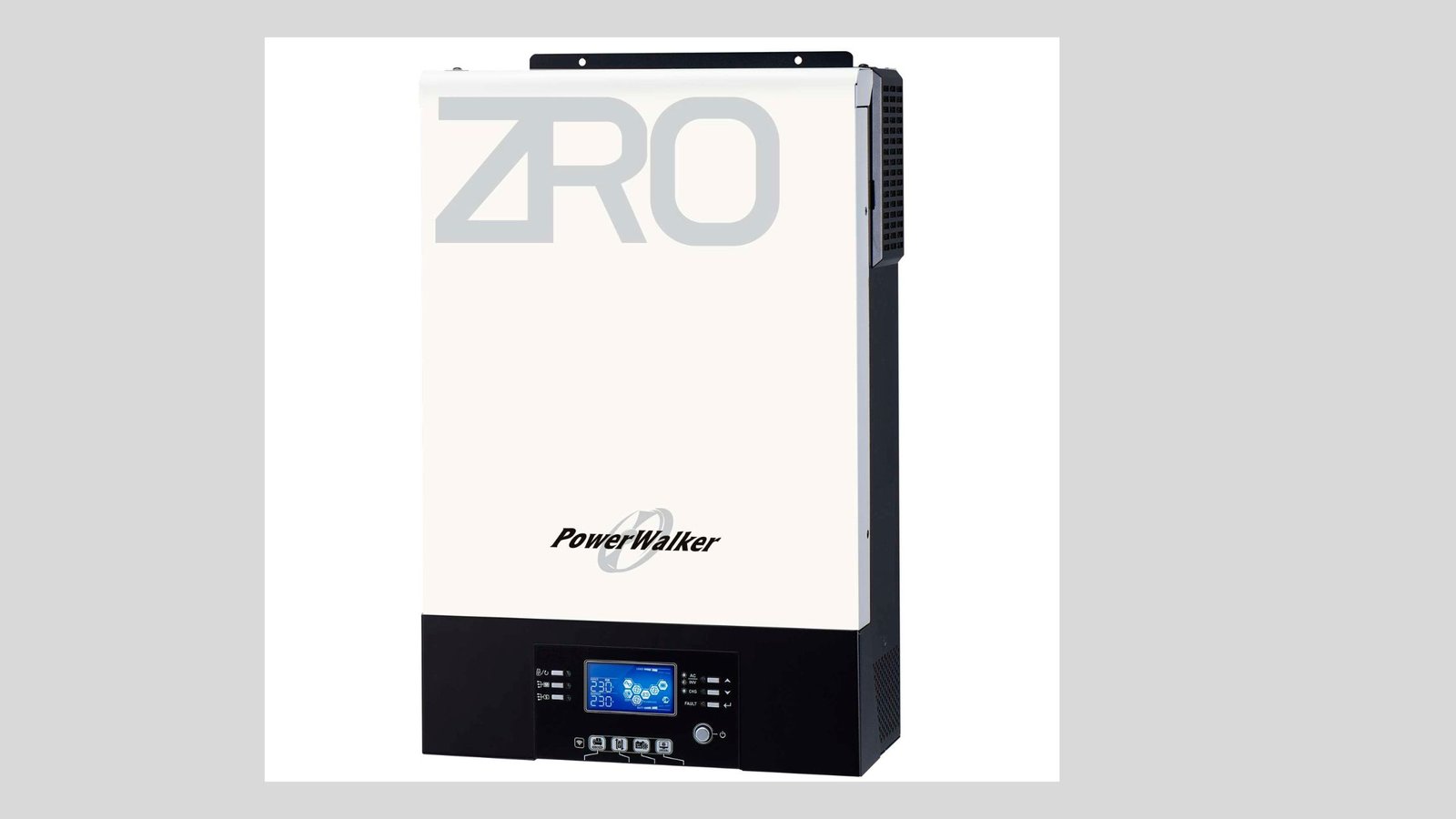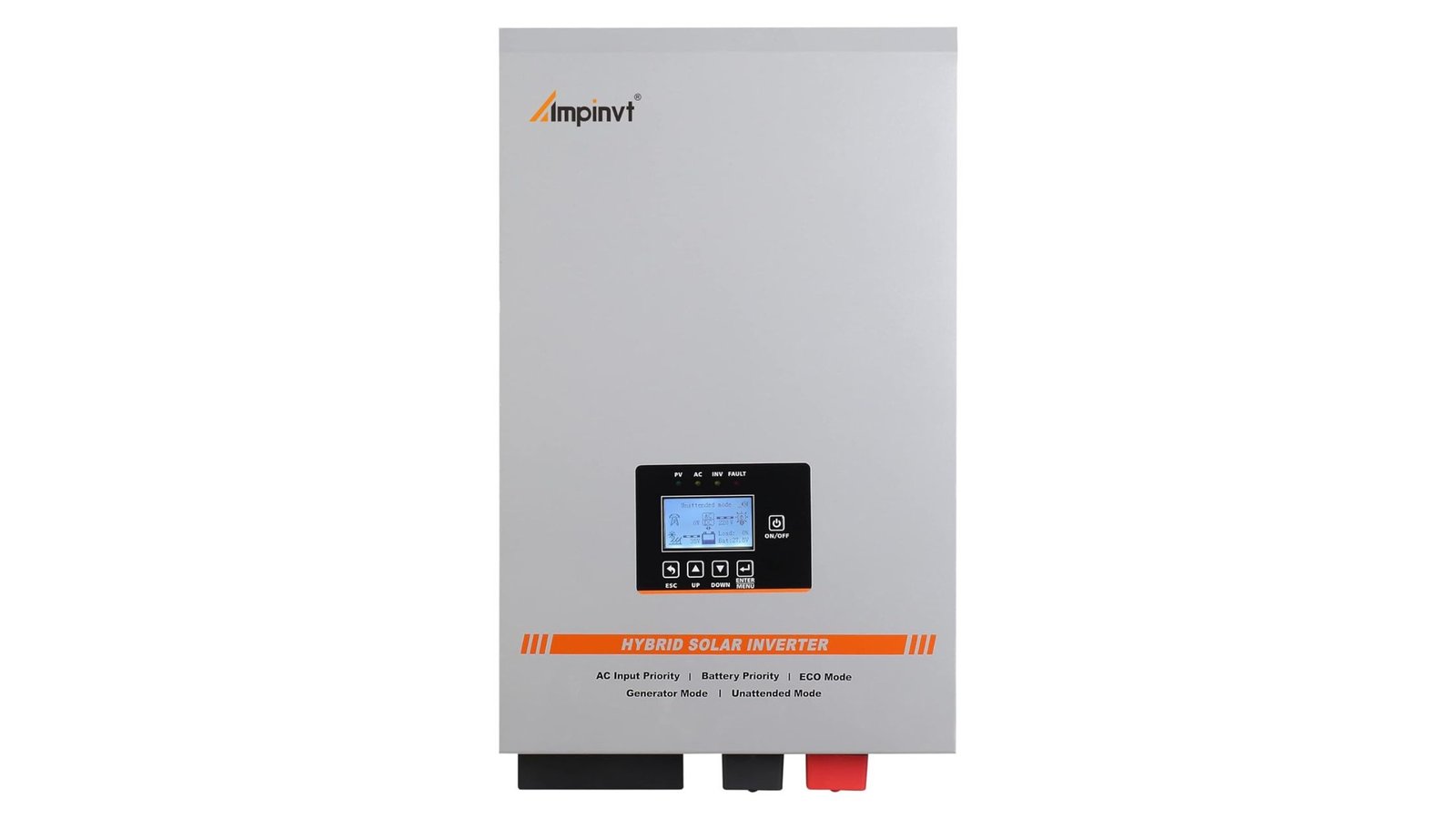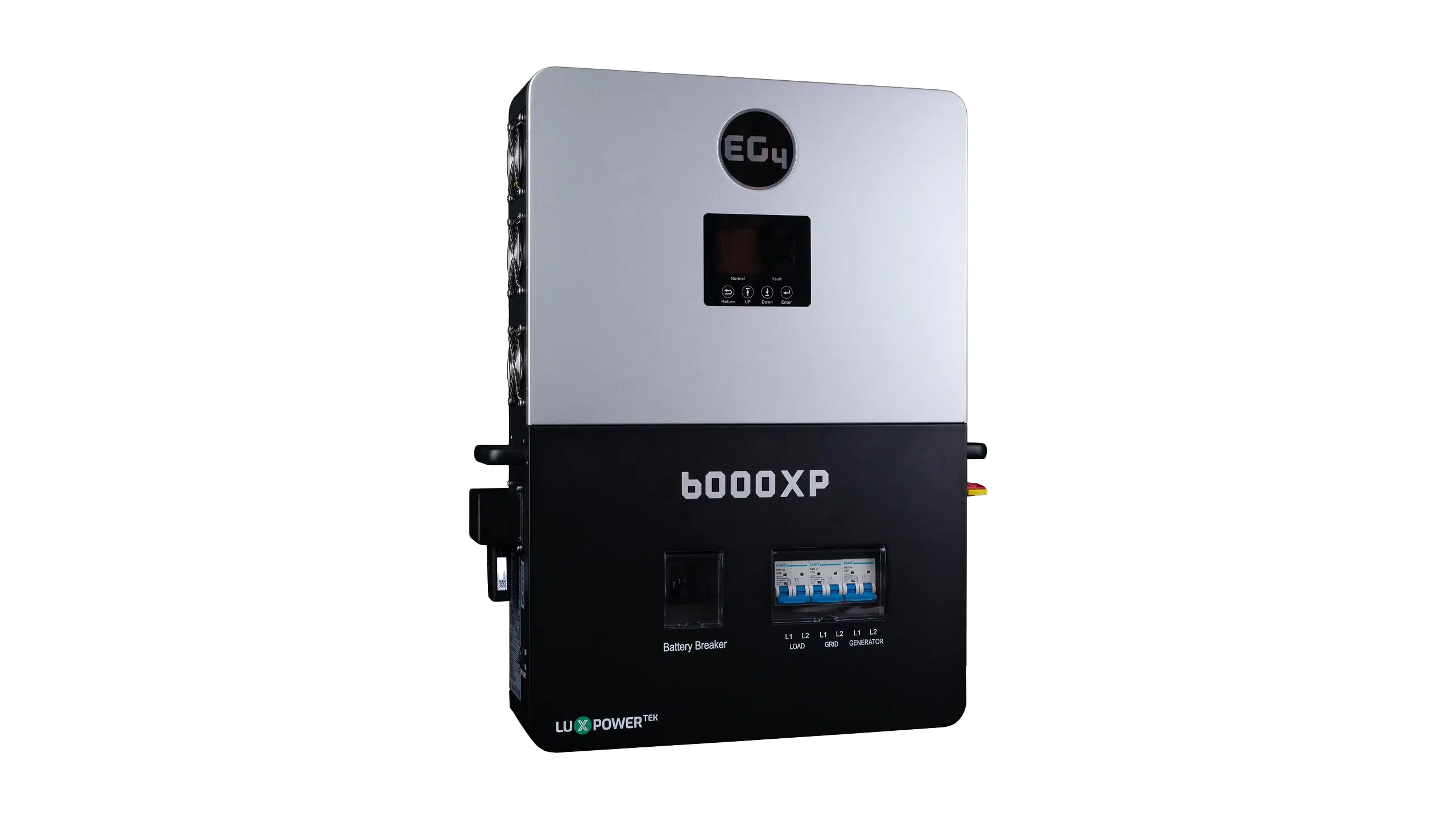An solar inverter performs the DC-to-AC conversion by changing the direction of a DC input very fast. As a result, a DC input becomes an AC output. Additionally, the filters and other electronics can be used to produce a voltage that varies as a clean, repeating sine wave that can be injected into the power grid.
In simple words, a sine wave is a shape or pattern formed by voltage over time, and it’s the power pattern that the grid may utilize without causing damage to any electrical equipment, which is specifically designed with all the basic functions of an inverter at particular frequencies and voltage types.
Did you know? The first inverters were mechanical and were invented in the 19th century. A spinning motor, for example, would be used to continually change whether the DC source was connected forward or backward. In the contemporary world, we construct electrical switches out of transistors, solid-state devices with no moving parts.

Few semiconductor materials like silicon or gallium arsenide are used to prepare Transistors. In response to the external electrical impulses, they regulate the flow of electricity.
Surprisingly, this can monitor your entire system and provide portal communication with computer networks, thereby additionally transforming solar energy into AC power. Solar-plus-battery storage systems depend on modern inverters to function independently without the grid’s support in the event of outrages if they are built to do so. Furthermore, it offers features like MPPT solar charge controllers to keep the energy monitored.
It would be fascinating to delve deeper into the electric controllers and their components. Also, a concluding glimpse of the best inverter with a detailed example will be provided.
6 Basic Functions of the Inverters:-
The basic functions of the inverter comprise the main circuit and the control circuit. Mainly, the rectifier and inverter are the primary components of the main circuit.
1. Convert Power: As mentioned earlier, inverters convert the DC into AC power. While DC power is one-directional, AC power alters direction occasionally. Inverters generally work by converting the main circuit through the control circuit. A rectifier converts the AC into DC in the main circuit.
2. Smooth and Filter current: The direct current is smoothened and filtered using the intermediate circuit. Depending upon the required frequency and voltage, inverters convert the DC to AC.
3. Maximum Power Point Tracking (MPPT): Maximum power is generated by the solar panels based on a certain point in the performance curve known as MPPT. The energy is extracted from renewable sources to optimize and operate at the most efficient point.
4. UPS integration and Battery Charging: Inverters added with CPU and other components in the circuit perform torque calculation that helps to provide backup power in crucial areas like hospitals and data centers during shutdowns.
Using AC power, inverters can be used to charge batteries and become an essential component in off-grid or backup power systems. It becomes apparent that a battery bank needs to have at least 320 amp hours for smoother operation of the device.
5. Harmonic filtering: The AC power generated by the inverter possesses different forms such as the sine wave, square wave, or modified sine wave. The unwanted harmonic waves can be filtered out to maintain the stability of the power flow.
6. Minimize energy loss: Inverters operating with high efficiency minimize energy losses during the conversion process of DC to AC power. Especially, in off-grid or renewable energy systems, utilizing the available power to a maximum extent becomes a vital factor.
4 Main Types of Inverters:-
The unique characteristics and functions, classify inverters into 4 main types namely:
1. Solar Inverter:

A Solar Inverter converts the DC power of a solar panel into AC power. The DC waves are naturally produced by solar panels when the home appliances and grid run on AC electricity.
The waveforms are manipulated to create smooth and transitional waves. These are simple grid-connected devices commonly used around the world, by utilizing one or more solar panel strings.
The devices with two types namely string solar inverters and micro-inverters:
String Solar inverters are together wired in series with the solar panels. The combination of DC from each solar panel gets converted into AC. Depending on the input voltage rating of an inverter, a particular number of solar panels can be connected to a string inverter.
For residential and commercial uses, the device varies from a mini 1.5kW single-phase to an enormous 3-phase 100kW.
These common types of devices are maintenance-friendly and acquired at a reasonable price with reliable technology.
At the same time, the only disadvantage of the string inverter is the significant loss of electricity production due to the inoperability of the solar array following the inverter breakdown. Sometimes, the requirement of an additional inverter becomes mandatory unless an oversized device isn’t purchased for a stable rating.
Micro inverters are the grid-tie devices with smaller power ratings. The plug-and-play concept simplifies the conversion process of DC to AC from a single solar panel. For easy and instant connection, they are sported with in-built MC4 connectors.
Unlike traditional and string solar inverters, they operate at a panel level rather than the whole solar system panel.
Despite its attractive features and convenience provided to users, the expensive price and the varied customer service by the local dealers are the major drawbacks.
2. Battery Inverter:
Among the varieties, a battery inverter is available in a wide range of sizes and it is one of the basic types used with batteries starting from automobiles that use superficial 150W plug-in style inverters to powerful 10,000W+ inverters in off-grid systems, which can provide additional backup power. These are portable inverters offering flexibility for powering laptops, RVs, boats, and Caravans, as well as household appliances like TVs, fridges, washing machines, etc.
The battery power which is DC electricity is converted into AC electricity of a higher voltage.
With proper care, these versatile devices can last for many years. The plug-in battery-type inverters can be coupled with MPPT solar charge controllers.
While selecting these types of devices, it is mandatory to consider the size and type of the battery bank such as the Lithium and Tubular. Also, it is essential to select the best type based on your usage and the environment.
Unlike the standard inverters, the device can handle the power flow bi-directionally. A modern battery inverter not only provides regular backup by drawing stored energy but also utilizes the additional solar power to charge the connected equipment for future use.
3. Hybrid Inverter:

In simple words, the Hybrid Inverter is a combination of Solar and Battery inverters into a single unit to handle the power simultaneously from solar panels, batteries, and utility grid. The integration of Solar and Battery inverters, known for their high efficiency and reliability, is used for commercial and industrial needs.
The DC power generated by the PV system is converted into AC power used to supply electricity to your home. Also, the excess electricity generated is transferred to the utility grid.
A Hybrid type of inverter simplifies the work of a conventional solar inverter by accumulating all its functions into a single device.
Moreover, the device can draw power from the electricity grid to charge your battery storage system to provide power during rainy or cloudy days, especially when it becomes difficult to harness solar energy.
Commonly known as battery-ready inverters, these are the most budget-friendly ways to add batteries.
A MPPT measurement along with the device, makes the calculation process of the electricity generated by solar panels, and the comparison with battery voltage less complicated.
Importantly, not all hybrid inverters have a perfect backup capability. The only drawback of the inverter is its limited backup power ability. Mainly, while switching to a backup mode during a blackout, a 5-second delay is witnessed initially.
4. Off-Grid Inverter:

An off-grid inverter is a system that works on a battery basis and can be operated for battery charging and load sharing. It is primarily used for agricultural, industrial, and backup purposes, these inverters can operate as on-grid hybrid systems.
Interestingly, the inverter ranges from a small size of 3 kW units to 10 kW units to run heavy-load appliances like Air Conditioners, electric ovens, water pumps, etc.
A 2.5 kW model can cost $1500 whereas a 10 kW model costs around $8000.
The device works perfectly in two different scenarios:
Daytime: The unconsumed power charges the battery.
Nighttime: The power flow is reversed when the battery feeds the load. Initiating the flow of current from the battery to the inverter guarantees that the power supply is maintained during the night.
The main advantage of the device is that a power failure or outrage does not affect the entire system and performs well independent of the grid energy. Also, you need not pay the electricity bills as the power system is no longer attached to the grid.
At the same time, the major drawbacks include its expensive cost and facing electricity issues when the battery doesn’t get charged due to lack of sunlight.
What is an Electric Controller?
An Electric Controller is a device that uses an electrical signal to receive input from a measured process. A sensor like a thermocouple, transmitter, or RTD is installed at a measured location determining the amount of output signal. Both electric signals and digital algorithms are used to perform the best functions.
A signal from an electrical device receives a response from an electrical controller to function based on the comparison made to a point providing an input signal to execute an output signal.
Using a Solar Regulator can control and manage the process of battery charging. Also, it will ensure whether the battery is charging perfectly or it is being over-charged.
Electronic components used in the solar system
Let us understand the different electronic components of a solar system, explained as follows:
1. Solar Panels:
The functioning of Solar panels is to absorb sunlight using semiconductor materials and convert it to Direct Current (DC). It is the powerhouse of the system.
2. DC Isolator:
The DC Isolator is more likely a safety switch that keeps the DC power disconnected from the system maintaining a safer environment.
3. Inverter:
An inverter is a translator that converts Direct Current to Alternate Current which most appliances and grids use.
4. AC Isolator:
The role of the AC isolator is very similar to the DC isolator. The AC power is disconnected from the system for safety maintenance.
5. Meter:
Like a fitness tracker, the Meter acts as a tracker for the solar system to help track the energy production of the system.
6. Wiring and Connectors:
It is a very important role of the wiring and connectors to safely handle the sun’s power. They act as a mediator to pass on the electricity between all other components.
7. Battery:
To store excess electricity, a battery is much needed, and even the sun doesn’t provide adequate light. However, all systems won’t have batteries.
8. Charge Controller:
The main role of the Charge controller comes into play when you have a battery as it helps manage the charging process. Also, it maintains safety and efficiency.
What is an MPPT Solar Charge Controller?
The MPPT is an abbreviation of Maximum Power Point Tracking and the MPPT Solar Charge Controller is a device that works smartly to help the solar system utilize the complete potential of solar panels.
Just Imagine how super-efficient it would be to perfectly pair the voltage/current of panels to the needs of the battery. Well, the MPPT solar charge controller exactly does the same, by being a perfect matchmaker for the system.
The maximum power point is where they produce high power at a particular combination of voltage and current. However, the point keeps changing constantly based on many factors like the age of the panels, temperature, and sunlight intensity.
The algorithm of the MPPT Controller keeps monitoring the current output and voltage of your panels. Later it will adjust accordingly so that the voltage and current will hit the battery at its sweet spot called the maximum power point. By this, the overall power output will get boosted up to 30% in comparison to the regular controller.
Benefits of using an MPPT Solar Charge Controller:-
- Fast battery charging
- Maximized power
- Reduced wear and tear
- Efficient charging
- Long battery life
- Handles higher voltage panels
- Requires smaller cables
However, if we consider the price factors MPPT controllers are very expensive compared to the regular controllers. So it is you, who has to decide whether investing the money would be worth it for your needs and requirements. Well, if you have a large system with highly efficient panels or work in many challenging conditions, then obviously the MPPT controller could be the most valuable investment.
Best Inverters for your solar system
Choosing the best inverters for your solar system would depend on your needs and priorities. According to research from different sources and combining all the information, here are some of the top contenders that you might consider:
SolarEdge Home Wave Inverter [Overall Best, Price $4,500 to $6000]
Growatt MIN Hybrid Inverter [Budget-Friendly, Price $2,500 to $3,500]
Fronius GEN24 Plus Inverter [High-Performance, Price $6,000 to $8,000]
SMA Sunny Boy Storage Inverter [Versatile & Compact, Price $4,000 to $5,000]
Sungrow SG Series Inverter [Off-Grid capabilities, Price $3,000 to $4,500]
Concluding facts
Ensure the power requirements and system size match your needs in the present as well as the future. Most important of all is to choose based on Battery compatibility, Features like MPPT, monitoring, and off-grid options. Also, based on the Warranty and Support.
Ray is an avid reader and writer with over 25 years of experience serving various domestic and multinational private and public energy companies in the USA.


